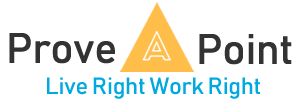To Get People to Really Want to Buy Your Product, You Must Focus on the 3 P's

Editor’s Note: In “Tough Love Tuesday,” we’re connecting side-hustling entrepreneurs with support, resources and advice from amazing experts. Sign up for our email newsletter to be notified about our Tuesday Facebook Lives and check back to our side hustle topic page for more helpful tips.
Below is an edited excerpt from Chris Gullibeau’s new book, Side Hustle: From Idea to Income in 27 Days. He was a guest for Tough Love Tuesday. Check out the video for more insight on turning your idea into a product, using the $10 experiment to test your offer and where to start selling right now.
To have a real-world side hustle, you need to transform your idea into an offer. At a bare minimum, an offer tells people exactly what they will get for their money –and it also usually makes clear how much money is required to get it. “Guitar lessons” is not an offer. “Hour-long guitar lessons for $50” is getting closer, but even better yet would be something like:
“Learn guitar basics quickly (and have fun doing it) from a veteran instructor with twenty years of performance experience. To sign up for hour-long lessons at $50 a lesson, call 555-Hot-Tunes now.”
When you’re presenting an offer, you want to make sure to give people all the pertinent information they need to make a purchase. A complete offer includes the following elements.
The promise: How your hustle will change someone’s life
The pitch: Why they should purchase or sign up now
The price: What it costs to purchase or sign up (and how to do it)
The promise should focus on the benefit people will receive from whatever you’re selling. You want to craft a short, bold statement that attracts attention and makes the benefit to customers immediately clear. “The most awesome guitar lessons in the universe” is a great promise that illustrates this concept well.
The pitch should provide everything someone needs to know, without getting bogged down in a bunch of irrelevant details. A key part of the pitch is urgency, which is related to the concept of persuasiveness. A bold, flashy offer is a great start, but for best results, you need to also provide a persuasive answer to this all-important question: Why should they take action right now?
Related: Side Hustle Secret: Here’s How to Get Your First 5,000 Email Subscribers
The price should tell prospective customers or clients not only what your product or service costs, but also what it includes and exactly what they need to do to receive it. This last part is also known as a call to action. Examples include: click this button, call this number, sign up here, and so on. It should be easy and obvious.
Here are a few examples on going from idea to offer:
Idea: Curriculum guides
Offer: “You’ll love this detailed curriculum guide that covers the North American geography material for fifth grade. The guide includes over 35 pages of information. I’ve also included a checklist for showing students how to create their class projects, including guiding questions that will make writing it really straightforward. You’ll get all this for just $20.”
Idea: Database lessons
Offer: “Take a private lesson on using Microsoft Access to save time and be more productive. Sessions are $55 an hour online and $65 in person. Spots are filling up — reserve yours online at DatabasePro.com.”
Idea: Make your own liquor
Offer: “Want to impress your guests with fancy homemade cocktails? Buy our Homemade Gin Kit ($49.95) and make gin in your bathtub . . . or maybe just your freezer. Get yours before Prohibition returns.”
Related: How ‘Hustle-Mode’ Is Trapping Thousands of Entrepreneurs
That’s the basic idea. Before going any further, see if you can shift your idea into a simple (yet specific) offer.
Here is a simple template:
Your idea:
Your pitch:
Your promise:
Your call to action:
Now put it all together in a couple of brief and catchy lines:
Your offer:
The five ways to create urgency
A successful offer doesn’t just show people why they need what you are selling; it also shows them why they need it now.
Here are a few tips to ensure that your call to action feels as urgent as possible.
- Use words like “now” and “today” in your call to action. Even if the offer will never change and never sell out, urgent language will spur your customers into action.
- If you want your customers to act quickly (“purchase now”), you should act quickly, too. When you get customer inquiries, respond as fast as you can. A study by the Harvard Business Review showed that when companies replied within one hour of the customer’s initial request for information, they were seven times more likely to sell to them.
- Use red for text meant to communicate urgency, especially when showing a discount or other time-sensitive call to action.
- Announce an upcoming price increase, but give people enough time to make a purchase or commitment before the change goes into effect ($19.97 this week only!). This is essentially another way to have a sale without calling it a sale.
- If selling online, add a countdown timer to your checkout page (“Time left to purchase: 3 hours, 14 minutes, 3 seconds . . .”) There’s no rule that says you can’t start the timer over again once it reaches the end of the clock.
Simple copywriting stuff
Wording your offer in a way that makes it sound even just a bit more compelling than your competition’s can give you a real edge. You don’t learn this type of writing in school, but with a bit of practice, it’s not too hard a skill to pick up.
Related: How to Get Real Results (and Sales!) From Facebook Ads
Here are a few pointers:
- Write to a person, not a group. Talk directly to that person and pretend there is no one else in the world.
- Have a purpose for every word. In good copywriting, nothing is superfluous. Every fact and every bullet point is there for a reason. Write multiple drafts and edit ruthlessly each time.
- Use numbers. There’s a very good reason so many headlines include numbers: They get our attention faster than words. That principle doesn’t just apply to headlines; use numbers throughout your pitch. How awesome are the most awesome guitar lessons in the universe? They’re approximately 36 percent more awesome than the second-most awesome lessons!
- Use words that elicit joy, surprise, reassurance, and other positive emotions. Keep it fun and lively. Don’t just list a bunch of features; maintain the focus on how your offer makes people feel better in some way.
- Help customers see themselves as part of the story. A good way to do this is through testimonials, which also provide social proof. Show potential buyers that there is someone else “just like them” who is thrilled with your offer.
- Use action verbs. The side hustler launched her offer. The customer placed an order right away. The side hustler rejoiced.
- Show excitement! You believe in your offer. You know it’s going to improve people’s lives in some meaningful way. Enthusiasm is contagious, so don’t be afraid to put yours on display.
- Keep it pithy, but be sure not to leave out any information that might persuade your potential buyer. Always keep the three elements in mind: promise, pitch, and a price.
Published at Thu, 21 Sep 2017 13:00:00 +0000




